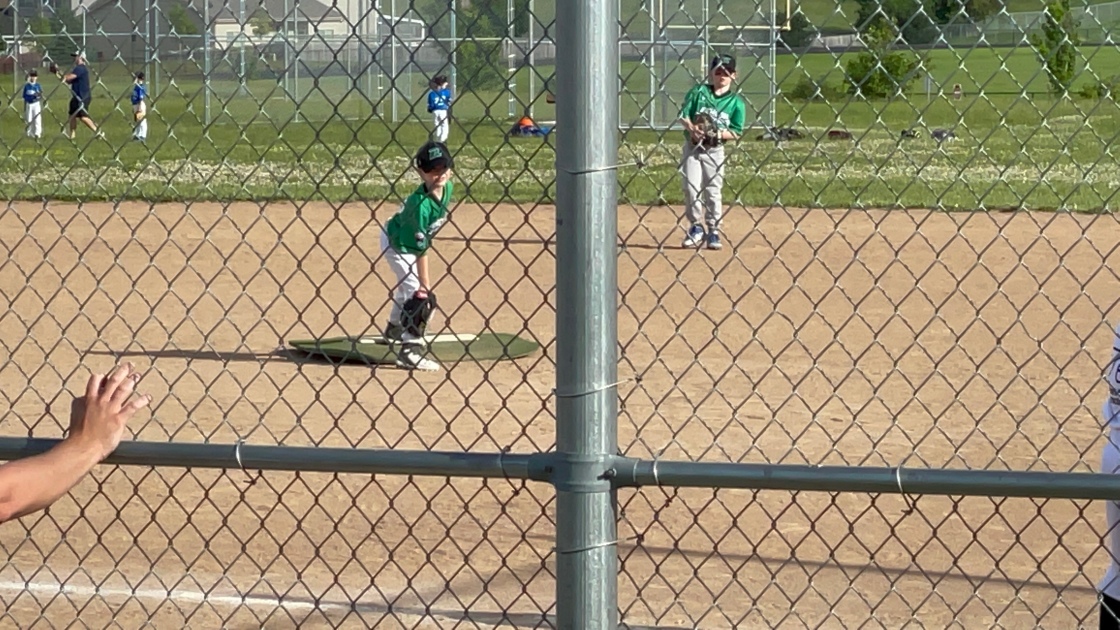Listen to the Podcast Episode Here
With the summer months among us we are seeing multiple sports physicals every day in the office. Football, softball, baseball, track, soccer, and more – everyone is starting to get back to their respective activities as local restrictions allow. With this brings great excitement for our youth, as many of them had to miss out on this last summer. This also resurfaces the topic of our kids specializing early in a single sport to promote early acceleration in a set discipline. Although it may seem like a good idea, multiple research studies have shown that this tends to bring about the exact opposite scenario than what we are striving for.

It seems like in today’s world everyone is trying to get a step ahead of the rest of the group. It is no different when it comes to youth sports. Early “Select” teams are popping up everywhere, promoting the idea that our kids must be good enough NOW to be successful LATER. There is a mindset that our children will never succeed in sports related activities unless we start them young. As parents we tend to allow our OWN THOUGHTS to influence our kid’s involvement in activities and the PERCEIVED value of success early on in their athletic endeavors. However, this push for early success tends to lead to early injuries, sports burnout, and decreased risk for success later on.
Our two boys love to be in activities. Our older son participates in swimming, tennis, golf, and baseball. Our four-year-old is not far behind his older brother. Although swimming seems to have become the “primary” sport for our eight-year-old, he has really begun to find a passion for baseball this year. I won’t lie – when the season began and I saw where his swing and throwing were at, I expected little success for the season.
However, in just a 6 week span he has grown tremendously in all aspects of the game. His swing has improved, his game knowledge is dramatically higher, and this last week he even got to pitch an inning. Although he has said he wanted to pitch in the past, he put little interest into practicing at home. When I heard he was going up that inning to throw, I became anxious. Let me say that again. ME, as dad, was anxious for my son to pitch. He had absolutely no anxiety at all about it. He marched right up, got into his pitching stance, and started letting them fly. I grimaced initially, expecting balls to go everywhere. To my surprise most of his pitches made it to the catcher, and many of them were right down the middle.

We celebrated after the game, discussing how great he did. They did not win the game. His pitches were not significantly fast. Several players got a hit off his throws (which meant he was throwing strikes). But he did it. He accomplished something he wanted to do and was extremely overjoyed about it. For a brief moment, I wondered if I had failed him and not started him in pitching sooner. Maybe I should be sending him to baseball developmental camps. Maybe I should buy pitching courses for us to practice at home. After all, many players on his team were already specializing in the sport; I didn’t want him to fall behind.
Just as these thoughts entered my mind, the universe came to me with an answer. As a pediatrician we receive frequent emails on continuing medical education, and one of the programs I take part in is called the Question of the Week. This last week’s question was spot on – How does early sports specialization lead to burnout in our youth? I had glanced over the material quickly last week, but now I needed to investigate further to remind myself of why our kids play multiple sports. Below are some of the articles referenced in that Questions of the Week. After reviewing this material again, I feel pretty confident that I currently do not need to go buy any pitching videos.
30% of our youth in the United States have elected to specialize in a single sport year-round
Jayanthi, Neery et al. Sports-Specialized Intensive Training and the Risk of Injury in Young Athletes: a Clinical Case-Control Study. Am J Sports Med. 2015 Apr.
It has been recorded that about 30% of our youth in the United States have elected to specialize in a single sport year-round. This means playing on multiple teams for that same sport all year, rarely branching out to other activities. This is typically stemmed by the THOUGHT that early specialization increases the chance for scholarships, success in the selected sport, and plans to play professionally. We hear about the youth that was signed by a professional soccer club in Europe, young phenoms like Tiger Woods in his prime, or every two-to-four years we get reminded of the Olympic athletes who have spent their young lives perfecting their craft. We think to ourselves, “Why can’t that be my kid?”
The simple fact is that early specialization does not typically increase the chance for success in a sport. Research in the past looking at this topic has found that the only sports that seem to benefit from this are gymnastics and figure skating, as the skills to do these activities develop earlier in life. Other team and individual sports tend to improve in the middle to older adolescent ages. In fact, when it comes to career success only about 0.2%-0.5% of high school athletes make it to the professional level. A study looking at select Russian sports schools followed 35000 athletes and found that only 0.14% reached elite status.
Several things that HAVE been seen with early sports specialization have been early injuries and burnout. As this occurs, adolescents will then give up on activities altogether, leading to an increased risk for mental health conditions, obesity, and lack of motivation. Other risks include the lack of other motor skills development (as most sports only focus on certain types of movement) as well as the enjoyment of trying out new and different things with their friends.

A study done by Giusti et al titled Comparing Burnout in Sport-Specializing Versus Sport-Sampling Adolescent Athletes: A Systemic Review and Meta-Analysis (found in the Orthopaedic Journal of Sports Medicine published March 2, 2020) looked at burnout in athletes aged 12-19 years old utilizing the ABQ (Athlete Burnout Questionnaire). The data showed that those athletes who had early specialization in a single sport had a HIGHER risk for burnout early on as well as an INCREASED sense of reduced accomplishment. This is most likely due to the idea that if the athlete can’t do well all the time in their select sport, then they must be doing something wrong. They are trained early and often to be successful and win, so when they don’t hit this expectation it gets internalized.
When you look at trying out various sports at a young age, it has been shown that this could actually increase the rate of success later on in life with select sports. A study done by Gullich, Arne and Emrich, Eike titled Evaluation of the Support of Young Athletes in the Elite Sports System (published in the European Journal for Sport and Society in Volume 3, Issue 2 in 2006) looked at 1500 German national athletes and found that most of these athletes had participated in multiple sports in their youth (many still doing so in their Olympic days). Another study looking at NCAA Division 1 athletes found that 88% had also participated in more than one sport in their younger years (Post, et al. High School Sport Specialization patterns of Current Division 1 Athletes. Sports Health. 2017 Mar-Apr; 9(2): 148-153.).
These types of studies and more have led to the American Orthopedic Society for Sports Medicine to release set recommendations on youth sports. The American Academy of Pediatrics also backs these recommendations. Some of these include:
- Having opportunities for free, unstructured play which improves various motor skills
- For youths specializing in a certain sport, they should be allowed to take breaks and focus on other sports throughout the year to improve full motor development and reduce risks for overuse injuries and burnout
- Sports that can be more specialized during middle adolescence are things like team sports, tennis, and golf
- Sports that can be specialized in late adolescence include endurance sports, track, and distance events.
When I look at my older son, I realize that his joy in his sports have NOTHING to do with specializing and more to do with the joy of the game. The joy he experienced while pitching had nothing to do with success at the position. He did not have to strike anyone out. He did not have to be the best player on the field. He enjoyed the moment for the moment itself. Although he is playing on a team, that is an example of free and unstructured play. If he were being “pushed” into being a pitcher or to have success, I fear that joy would soon leave him.
Maybe someday he will want to specialize in baseball. He still says swimming is his “primary” sport, however even now I am starting to see some signs of early burnout due to the frequency of the event. This summer swim meets are returning. I hope this will bring more joy back to the activity itself. Perhaps when the new school year starts, we will back off a little on the swimming and focus on, well, being a kid. We leave the choice to him, typically, on what he wants to do. However, if the fatigue is there then it may not be a choice he gets to make. Only time will tell.
Stay Healthy
Stay Safe
Imperfect Dad MD
Listen to the Podcast Episode Here
